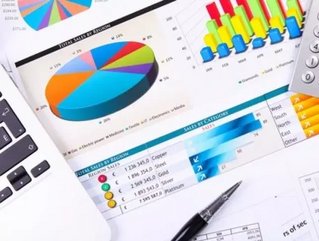Blending Data and Visualization for Better Revenue

The need for data is not new for businesses.
They have been attempting to accumulate data for many years to help them know how to increase revenue, improve profits or better appeal to customers. New technologies have made it easier to collect that data and now to use it different ways.
Blending data and using visualization is providing more information for businesses to be more competitive.
Data Blending is the Key to Analysis
Data blending and visualization work together to give companies a better look at their options and opportunities. It can be used in many different ways to determine how best to proceed.
For example, an organization can determine how the results will differ with a completed project if it were to be attempted with new data.
Instead of just plugging in projected numbers and guessing what difference they would make, data blending allows companies to see the differences in the processes and get the details for why the results are different.
Answering "What If"
As the article “How Data Blending & Visualization Can Unlock Business Results,” discusses, this process allows businesses to ask all sorts of "what if" questions.
They can re-enact processes with various scenarios to see the different results. This gives them more information to help them reach their business goals.
Instead of asking the IT department to run numbers or make alterations, data blending happens automatically and allows the managers or CEOs to review the information themselves and see the results.
Determine the Right Direction
Data blending and visualization allows you to take information from multiple locations and blend it seamlessly into one worksheet.
Create charts, graphs and other visual images from that data that can be used in board meetings, planning sessions and other situations where you need to make decisions or determine the next step.
For example, this process can be used when deciding which products will be profitable going forward and which ones need to be altered or dropped from the company.
The data sets can come from operations, development, marketing and other departments and meld together to create a complete picture to show the decision makers.
Read Related Content in Business Review USA:
Keeping Customer Data Secure in Today's Business World
3 Reasons that Prove your Business Needs to Utilize Big Data
The Benefits that Big Data and Analytics Afford Retailers
Utilize Different Types of Data
Another benefit of data blending is that it can combine different types of data into one place.
For instance, operations may use a daily table for certain types of data while the finance department may focus on monthly or quarterly data.
Since data blending automatically converts it to the desired tracking level, you can use both kinds of data to determine an annual increase in a product's profit or loss, for instance.
With the creation and storage of more data come more opportunities to use it in innovative ways to help increase a business' bottom line.
Data blending and visualization through charts and spreadsheets are one practical way of benefiting from all of that data collection.
It allows companies to plan for success by predicting the future in various scenarios in an easy-to-understand format.
About the Author: Joyce Morse is an author who writes on a variety of topics, including business and technology.
Follow us on Twitter: @bizreviewusa






